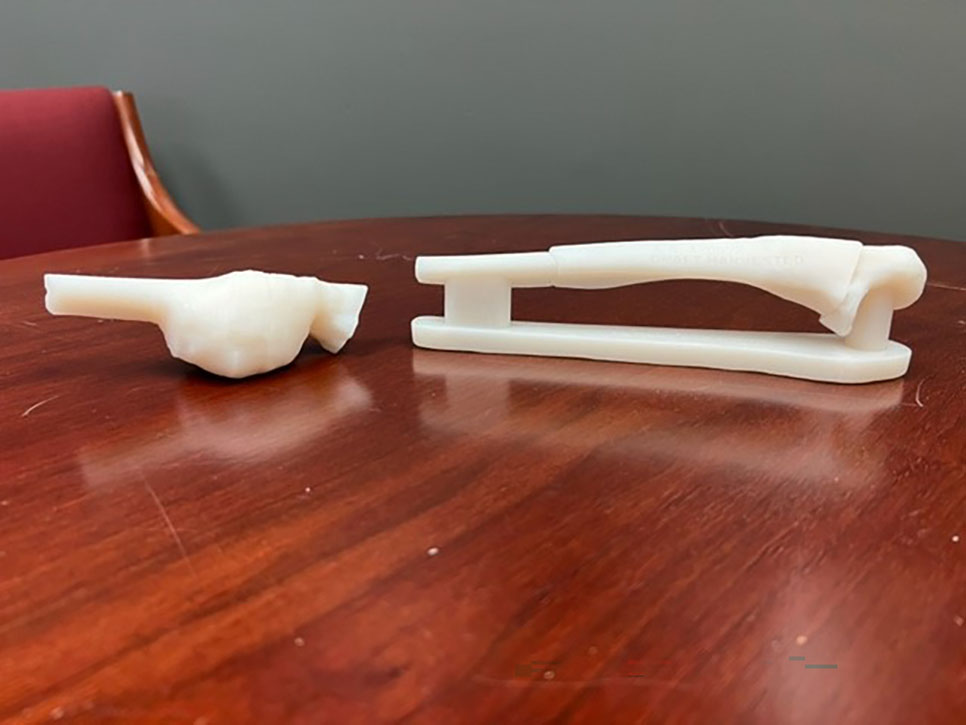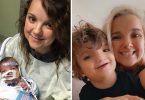For months, Wes Roberts complained about the pain in the lower part of his left arm. Like many high schoolers, he put off going to the doctor to have it checked out for as long as he could – suffering through his classes at Aquinas High School, through football season, through kayaking adventures and fun outside of school with his friends, family and girlfriend, Ashlynn Atchison, 17.
But in the spring of 2022 it became too painful. His theology teacher required all exams to be handwritten, but his arm hurt too much to even write – and he’s left-handed. He couldn’t even make it through an exam.
“I thought it might have been a pulled muscle or, you know, a sprain or something like that,” said the now-17-year-old Roberts.
His mom, Elizabeth, also thought it was something minor when she drove him to Eisenhower Army Medical Center at Fort Gordon. The physician asked Roberts a few questions, and then fast-tracked him to the orthopedist for further evaluation.
“He basically laid it out, that there was a good possibility that he had sarcoma. It was all the same day,” Elizabeth Roberts said. “Our life immediately stopped, and everything was about medical appointments and scans. It was wildly fast. Everything was just fast.”
Eisenhower referred Roberts to the Children’s Hospital of Georgia at AU Health for treatment. His orthopedic surgeon, Dr. Kelly Homlar, said his case is a bit unusual. Most osteosarcomas occur in the leg near the knee; the forearm is pretty rare.
“With bone sarcomas, typically, the warning signs are a pain that is progressively worsening and may even wake him up from sleep. He was starting to have that kind of pain,” she said.
Homlar sent him for CT scans and X-rays and did a biopsy of the tumor that confirmed osteosarcoma.
What went through his mind when he received that diagnosis?
“Well, that’s not going to be fun,” he said.
Atchison said she didn’t take the news quite as smoothly.
“At first, I was like a wreck. I was sobbing because I thought he was going to have his arm cut off,” she said. “Then I was like, it’s Wes. He’s going to be fine. He’s fully independent. It was more me trying to calm my nerves and him trying to calm me, even though he’s the one with the life-threatening illness.”
They had been best friends for two years and dating for four months when Roberts was diagnosed. Atchison stayed by his side throughout treatment.
Roberts began receiving chemotherapy under the direction of Dr. Colleen McDonough, pediatric medical oncologist, for 10 weeks before he had surgery to remove his ulna – one of the bones in his forearm – with tumor and replace it with bone from a cadaver.
During surgery, Homlar used a relatively new technology to AU Health to map out the surgery ahead of time, saving time in the operating room. Using the images from the X-rays, CT scans and MRI, Homlar and a team of digital specialists could create 3D models of the bone and tumor and 3D printed custom cutting guides for both Roberts’ bone and the cadaver bone. It’s like performing the surgery digitally first, before making any cuts in the operating room.

A 3D model of Roberts’ bone with tumor (left) surgically removed and replaced with cadaver bone. The model provides a guide for surgery.
“It’s like putting pieces of a puzzle back together. It just slides perfectly into place,” she said.
Without this technology, Homlar said she would cut the tumor out, and then cut the cadaver bone to fit. It often took multiple trips back and forth from the patient to a worktable in the back of the operating room to get the fit right.
The new technology allows precise removal of the tumor, improved fit of the cadaver bone and reduces the amount of time spent in surgery – which is better for her and the patient.
Once the cadaver bone is in place, metal plates are screwed in to hold it in place. Over time, as the bones heal, the patient’s natural bone begins to cover the cadaver bone and stabilizes it.
After surgery, Roberts continued chemotherapy for about a year. For the next nine months, he spent nearly every week at Children’s, attending school online and typing his assignments. He went home for a couple of days here and there, but throughout treatment, Children’s became his second home.
“The nurses are like our family. We love them. They were very good to us,” Elizabeth Roberts said.
Roberts’ arm is now weaker – as would be expected – but fully functional. Homlar said some of his muscles had to be removed during surgery, and he is not able to bend one of his knuckles, but otherwise he has good range of motion in his elbow and good function in his hand. He goes kayaking, plays the guitar and is writing again.
“Really the only expectation they wanted was for me to be able to pick up a spoon and put it in my mouth,” he said.
Homlar will continue to follow him for 10 years.
“About 75% of osteosarcoma patients who present to the doctor with isolated disease (no spread of the tumor to distant sites), we can cure,” she said. “A lot of my sarcoma patients have grown up, gotten jobs, gotten married and had kids. It’s really fun to see them progress through life. It is truly rewarding to see patients like Wes doing well.”


